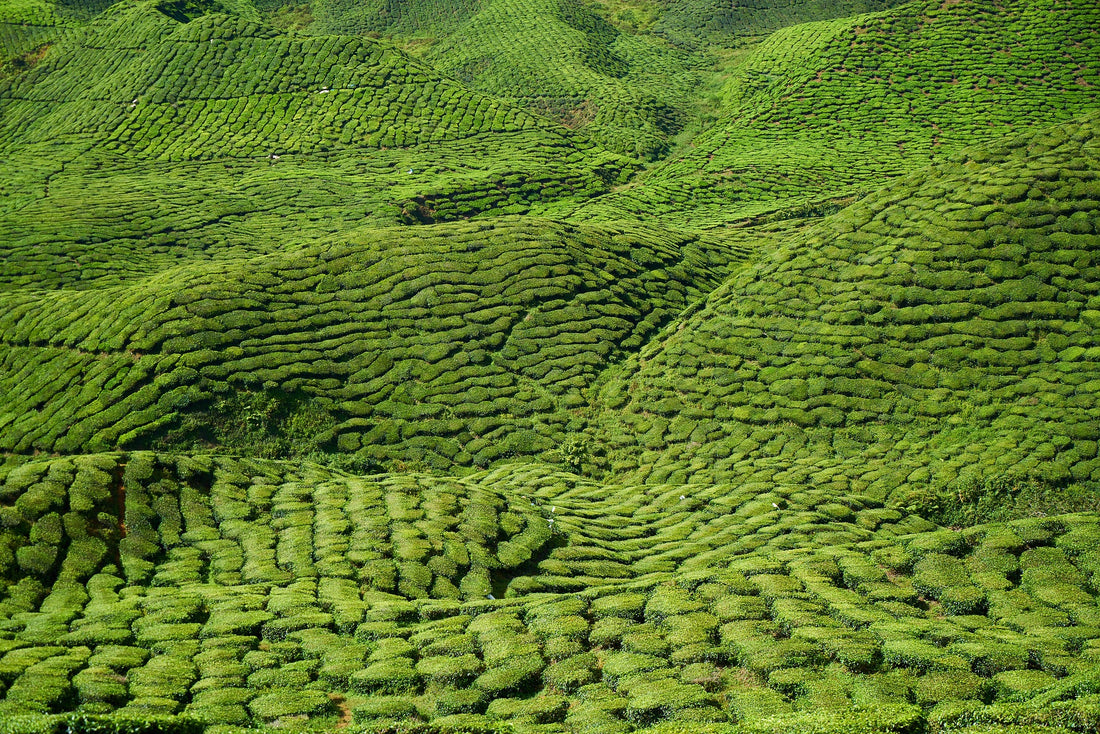
15 Must-Know Varieties of Green Tea | Ultimate Guide for 2023
Become a green tea savant with our guide on the most popular green tea varieties.
Green tea comes from the camellia sinensis plant. The leaves are generally picked from the plan and then heated and dried without undergoing oxidation - which is why green teas retain their green colour. Comparatively, black and oolong teas undergo wilting and oxidation while pu'er teas go through additional fermentation.
Most green teas variations originate from China and Japan, though there are many other countries that produce green teas such as Korea, Germany, Australia, India and Taiwan.
Here are 15 types of green tea to know.
Baimao Hou
Baimao Hou is grown in the Taimu mountains of Fujian, China and harvested in the first two weeks of the season (mid-March). Its name translates to white-haired monkeys as its leaves are said to look like a white-haired monkey's paw. With a delicate and light profile, baimao hou is similar to white teas - which undergo even less processing than green teas.

Bilouchun
Bilouchun is a renowned green tea grown in the Dongting mountain region of Jiangsu, China. Its famous for being highly fragrant and the spiral shape of its leaves which look like tiny snail shells. Bilouchun literally means green snail spring.

By Qirille - Own work, CC BY-SA 4.0.
Chunmee
Chunmee is a popular green tea that's used as a staple widely around the world. It's pan fired and has a strong flavour with slight astringency and smokiness. Chunmee is mostly produced in the provinces of Anhui and Jiangxi, China.

By Paweł Więcek (evilcoven) - Own work, CC BY 2.5.
Dafang
Similar to the famed longjing tea, dafang tea leaves are flat and long. Dafang has a long history and may have been some of the first teas exported to Europe. From the iconic Huangshan Mountain of Anhui province, this tea is generally wok roasted and has a sweet, floral taste with slight astringency.

Gyokuro translates to "pearl dew". From Japan, it's one of the world's most expensive teas. The tea bushes are shaded for up to three weeks before harvesting which produces a more intense flavour from the higher theanine and amino acid content.

By Rama - Own work, CC BY-SA 2.0 fr.
Kabuse
Another premium Japanese tea, kabuse tea is also shaded before harvest. However, the shading is only up to ten days, which allows for more astringency to develop as well as sweetness. The prefectures of Mie and Kyoto are the biggest producers of kabuse.

By Shizuha - Self-photographed, CC BY-SA 3.0.
Longjing
Longjing is one of the more famous green teas from China, and authentic longjing tea must be produced in Zhejiang. It's delightfully fresh, vegetal and mellow. It's grown in the shade, undergoes minimal oxidation and has a distinct long, flat shape.

By Difference engine - Own work, CC BY-SA 4.0.
Lu'an Melon Seed
Hailing from the city of Lu'an in Anhui, China. Lu'an melon seed only uses the second leaf on each branch. It's baked and dried which brings out a unique flavour in comparison to other Chinese green teas which are often pan/wok fried.

By PanShiBo - Own work, CC BY-SA 3.0.
Maofeng
Literally meaning furry peak and also grown near Huangshan, maofeng tea leaves are covered in small white hairs. The leaves are made up of new tea buds and picked early in the harvest season.

By Verylikerice, CC BY-SA 3.0.
Maojian
Grown in Henan province, maojian is famed for its floral fragrance and would suit the tastes of those who prefer a bolder flavour. Similarly to maofeng, its leaves are also covered in small white hairs but has a spikier appearance.

Matcha
Matcha is one of the more distinct teas. When you're drinking a matcha tea, you're actually drinking the whole tea leaf. Tea shrubs are shaded before harvesting to increase the chlorophyll, which is what gives it the vivid colour and sweetness, and then ground into powder. Matcha has become highly popular for use in recipes and particularly desserts.

By Evanhoever - Own work, CC BY-SA 4.0.
Mengding
Mengding hails from Sichuan. It was traditionally highly rare and prized until more mengding tea was produced to meet this demand after the mid-Tang dynasty. It has a mellow, roasted flavour and is bright green in colour.

Sencha
Another Japanese tea, sencha is a very delicately bitter tea and the most common tea variety in Japan. It is produced from the first pickings of the spring season and comes in many formats and grades. Sencha is first steamed before being dried which sets it apart from many Chinese green teas.

By Difference engine - Own work, CC BY-SA 4.0.
Yunwu
Yunwu, or cloud mist, is a legendary tea from Zhejiang and Jiangxi, China. It has a light, sweet and fruity flavour profile. It's grown in the shade which increases the chlorophyll content - similar to gyokuro and kabuse teas those these are manually shaded.

Matti&Keti, CC BY-SA 4.0 <https://creativecommons.org/licenses/by-sa/4.0>, via Wikimedia Commons.
Zhucha / Gunpowder
Zhucha literally translates to "pearl tea". Zhucha's leaves are rolled into pellet shapes, hence the English name name "gunpowder". This shape allows the tea to retain flavour and protects it from breakages. North African mint teas typically use gunpowder tea as its base green tea.

And finally, on top of this list of 15, here are a few honourable mentions to green tea variations:
- Jasmine Pearl - green tea infused with the scent of jasmine
- Genmaicha - sencha with roasted and popped brown nice
- Hojicha - sencha or bancha that has been roasted
- Moroccan Mint - typically gunpowder tea with mint leaves